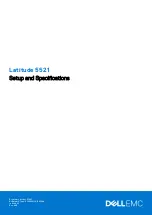
11
I-WLAN
182
To
set
up
a
stitched
interface
pair,
the
StitchedInterface=
property
for
each
interface
is
set
to
the
other
interface
in
the
pair.
With
I
‐
WLAN
for
example,
a
GTP
tunnel
may
be
set
up
as
follows:
Device:/>
add
Interface
GTPInterface
Gn
LocalEndpoint=gn_ip
InterceptDHCPInform=Yes
StitchedInterface=MS
The
IPsec
tunnel
in
the
pair
is
then
defined
as:
Device:/>
add
Interface
IPsecTunnel
MS
"
"
StitchedInterface=Gn
Using IP rules
It
is
important
in
an
I
‐
WLAN
setup
to
create
the
appropriate
IP
rules
in
the
main
SEG
IP
rule
set.
These
rules
consist
of
Deny
rules
that
prevent
traffic
flowing
between
particular
components
of
the
network,
as
well
as
Allow
rules
which
explicitly
permit
traffic
flow.
At
minimum,
IP
rules
should
perform
the
following
functions
for
I
‐
WLAN:
1. Prevents
communication
between
external
clients.
2. Allow
DNS
lookup
to
be
performed
by
clients.
3. Allow
HTTP
traffic
to
flow
from
clients
to
the
public
Internet.
Adding client routing
As
clients
connect
in
a
I
‐
WLAN
solution,
there
has
to
be
a
route
for
the
client
in
the
relevant
SEG
routing
table
(usually
the
main
table).
This
routes
the
IP
address
handed
out
to
the
client
by
the
GGSN
through
the
IPsec
tunnel
to
the
client.
There
are
two
ways
this
route
can
exist:
•
A
separate
route
can
be
added
automatically
every
time
a
client
connects
by
enabling
the
IPsec
tunnel
option
AddRouteToRemoteNetwork
.
•
A
single
static
route
is
added
manually.
This
routes
the
entire
network
range
used
for
client
IP
addresses
on
the
IPsec
tunnel
object
(which
is
treated
like
an
interface
in
the
SEG).
The
number
of
connected
clients
can
usually
become
large
with
I
‐
WLAN,
so
the
second
option
of
manually
adding
a
static
route
is
recommended.
This
avoids
the
processing
overhead
of
continually
adding
and
removing
client
routes,
as
well
as
reducing
the
routing
table
lookup
overhead.
















































